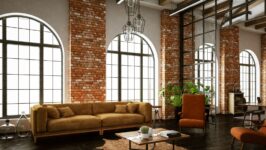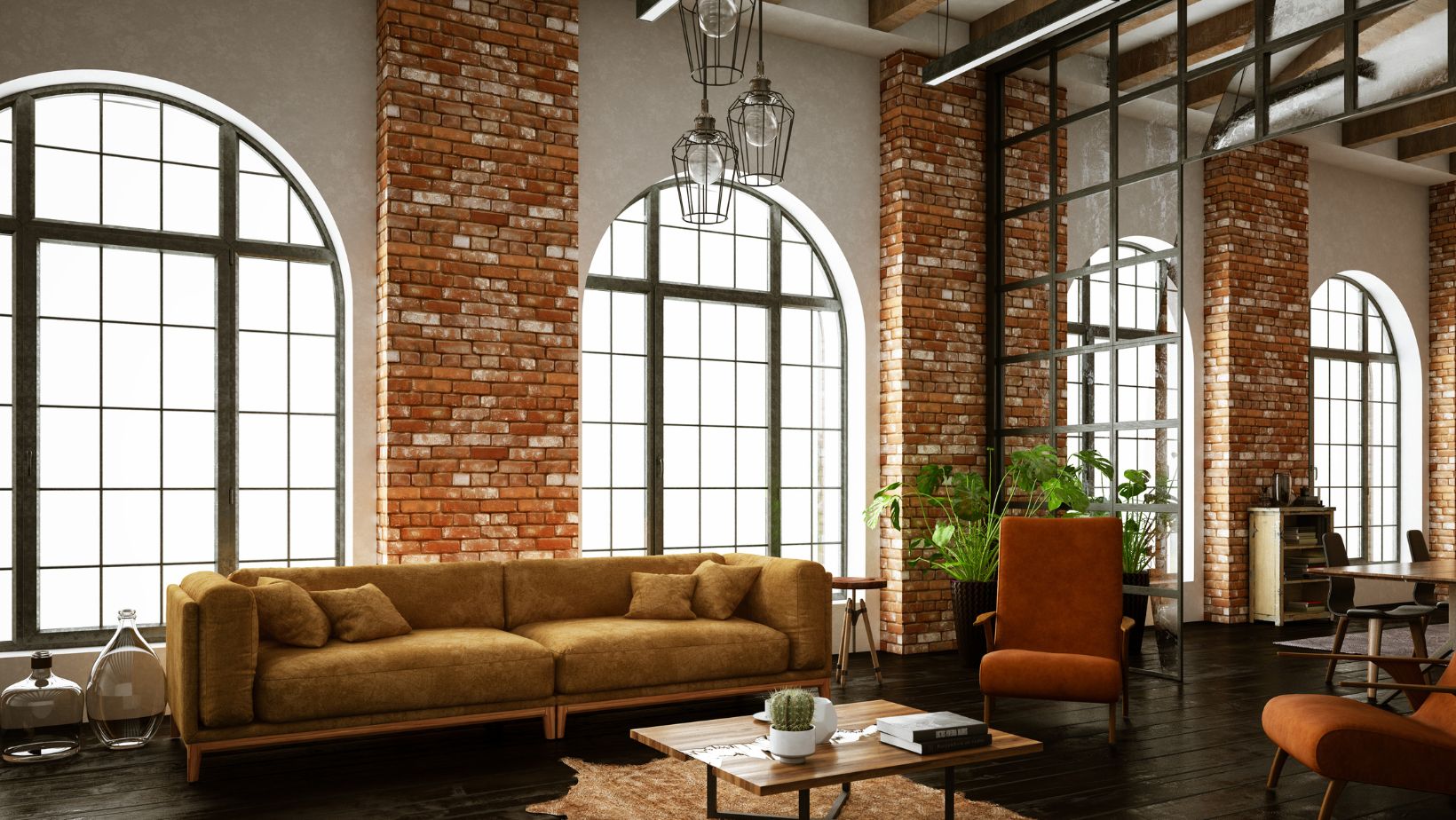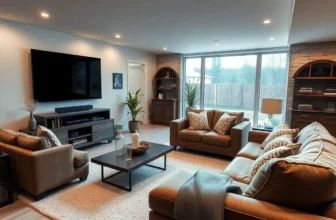
6 Ways to Add Industrial Chic Style to Your Home

Industrial chic has emerged as one of the most compelling and enduring trends in modern home design. Characterized by its raw, almost unfinished aesthetics, it fuses gritty urban looks with minimalist sophistication to create interiors that are as stylish as they are functional. Taking inspiration from converted warehouses, factories, and loft spaces, the modern industrial style proudly embraces imperfection, showcasing elements that are more often than not hidden in more traditional home designs.
At the heart of this trend, there’s a celebration of materials in their natural or weathered state – think exposed brick, concrete floors, aged metals, and reclaimed wood. The style balances utilitarian practicality with visual drama, making it particularly appealing to anyone who favors clean lines, neutral palettes, and a touch of edge. And as more homeowners gravitate towards open spaces, honest textures, and bold features, industrial chic is being widely recognized as the perfect canvas for crafting spaces that are modern, practical, and effortlessly cool.
So, if you’re looking to bring this stylishly unrefined aesthetic into your home, here are six key ways you can embrace industrial chic with authenticity and flair.
1. Exposed Brick and Concrete
Few features scream “industrial” more than a bare brick or concrete wall. These textural surfaces pay homage to the architectural bones of a building and are guaranteed to add instant character to any space. Exposed brick walls can bring undeniable warmth, depth, and history to a room, making them a perfect backdrop for both modern and vintage furnishings.
If you’re lucky enough to have original brick or concrete walls in your home, it could pay dividends to leave them exposed (but properly sealed) to maintain their natural patina. For those without such features, fear not; there are plenty of high-quality faux finishes available, including brick veneers and textured wallpapers that convincingly mimic the look of real materials.
To complement these rugged surfaces, try pairing them with sleek finishes like glass or metal to achieve a balanced, layered look that stays true to industrial chic principles.
2. Bare Metal Column Radiators
When it comes to heating, bare metal column radiators are a spot-on choice for anyone wanting to maintain the industrial vibe while still achieving warmth and comfort. These radiators certainly serve a practical purpose, but they also double as seriously eye-catching design statements.
Typically crafted from steel or cast iron, metal column radiators echo the mechanical, factory-born roots of the industrial style. Their ribbed profiles and solid structure make them perfect for use in converted lofts or even new builds that are crying out for an urban edge. What’s more, their efficiency and durability mean you won’t have to sacrifice function for form.
Try to opt for finishes like raw steel or aged brass to maintain that industrial, almost steampunk look. For maximum impact, position them against darker walls or beneath large windows.
3. Industrial Lighting
Lighting plays a massive role in shaping the mood of any interior, and industrial chic designs are no exception. Think statement pieces that look like they’ve been salvaged from a vintage warehouse or workshop – metal pendant lights, caged sconces, and exposed filament bulbs are all classic choices.

When choosing lighting, go for fixtures in matte black, brushed steel, or aged copper. These finishes effortlessly blend with raw textures and will contribute to a cohesive industrial look. Oversized pendant lights work particularly well above dining tables or kitchen islands, adding a touch of drama and focus to what are otherwise functional zones.
For extra flair, try to layer your lighting by mixing overhead fixtures with wall lights and floor lamps, which will create a sense of depth. Position them strategically to highlight textural elements such as brick walls or reclaimed wood furniture.
4. Reclaimed and Raw Wood
While industrial design often leans on metal and concrete, it’s the careful addition of natural, weathered wood that injects warmth and personality into the scheme. Reclaimed or raw wood offers a welcome contrast to cooler, harder materials, softening the overall look without straying too far from its urban edge.
Seek out furniture crafted from salvaged wood – dining tables, shelving units, and coffee tables made from old factory floors or shipping pallets are especially fitting. Distressed finishes and visible grain patterns will also add authenticity.
To take things up a notch, you can try incorporating raw wood through smaller accents like stools, trays, and picture frames. Mixing wood tones can create a more organic, lived-in feel, so don’t be afraid to experiment with different finishes and grains.
5. Metal Accents and Fixtures
It almost goes without saying that metal is a defining material in industrial interiors. But incorporating metal into your home doesn’t have to mean creating a cold or sterile space – when done thoughtfully, metal accents can make a bold visual addition to your décor without overwhelming it.
Consider adding things like shelving units with black steel frames, brushed aluminum bar stools, or antique metal clocks. Even small touches like iron cabinet handles, pipe-inspired curtain rods, or wire baskets can lend an undeniably industrial feel.

To avoid a space that feels too harsh, try to balance the metal with textiles like wool, linen, or leather. A leather sofa paired with steel coffee tables, for instance, will provide comfort and cohesion in equal measure. Mixing in soft furnishings in neutral or earthy tones will help to ground the overall look while still keeping an inviting feel in your space.
6. Open-Concept Spaces
The industrial aesthetic thrives in open-plan layouts, echoing the vast, airy nature of old warehouses and factories. But aside from maximizing light and space, embracing an open-concept design also provides a blank canvas for industrial-style furnishings and décor.
It might seem drastic, but if your home layout allows, consider knocking down unnecessary walls or using glass partitions to really open things up. To define different areas within an open space – such as living, dining, or work zones – use visual cues like large area rugs, lighting clusters, or changes in flooring.
Industrial elements like steel-framed room dividers, open shelving, or sliding barn doors can all act as subtle zoning tools without disrupting the flow. Just remember to keep the color palette cohesive across the whole space to maintain harmony and continuity.
Bringing It All Together: Your Industrial Chic Home
Industrial chic offers a characterful blend of functionality and flair, making it an excellent choice for anyone who doesn’t want to choose between style and substance. With its focus on raw materials, honest textures, and utilitarian details, this design choice celebrates the beauty of imperfection and simplistic elegance.
Whether you’re renovating a city loft or trying to add edge to a countryside home, integrating industrial elements can dramatically transform your interiors. From exposed brick walls to metal accents and open layouts, the key is to find a balance between rugged charm and modern comfort. But however you do it, embrace the raw appeal of industrial chic and let your home tell its own story of texture, history, and daring design.




